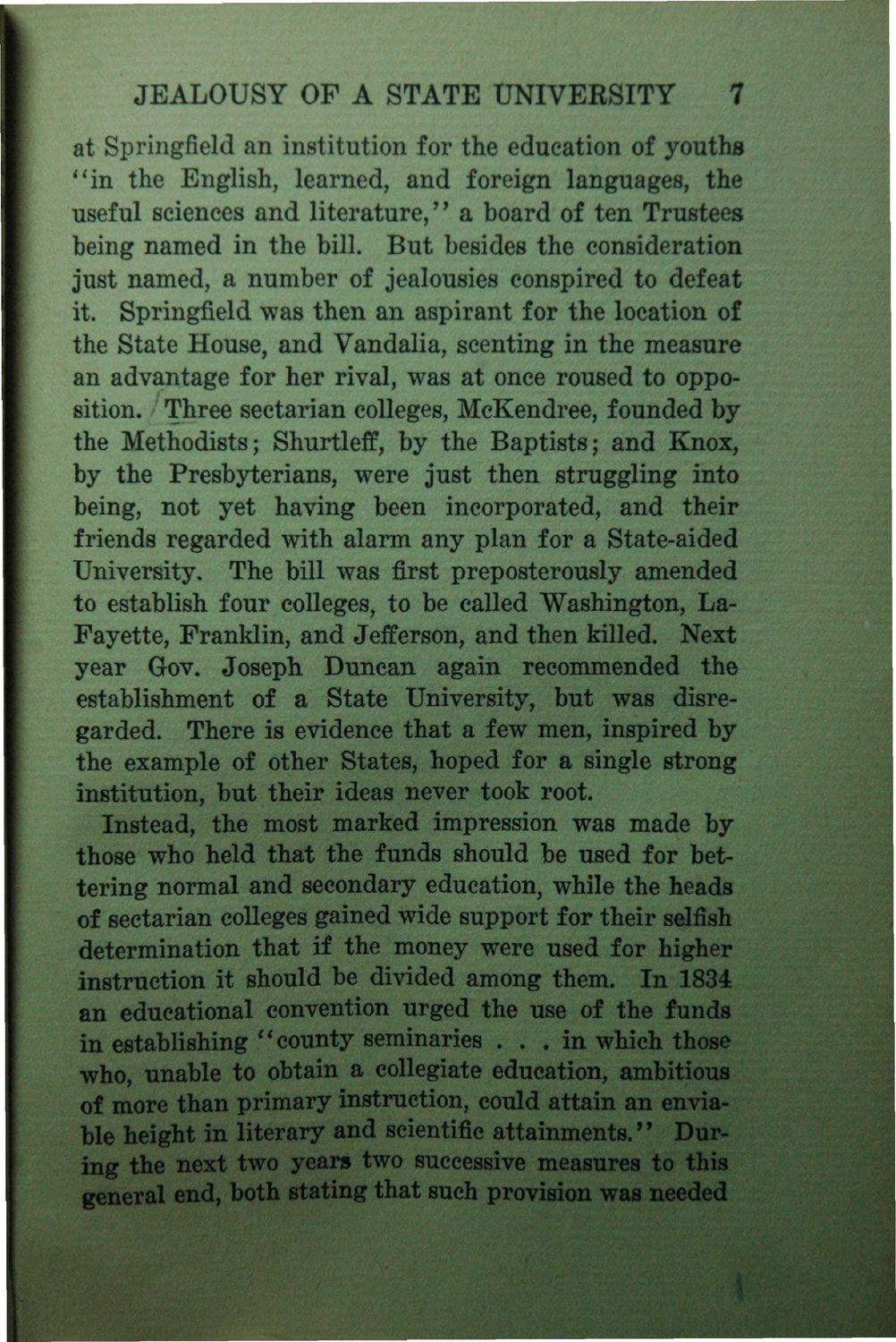| |
| |
Caption: Book - History of the University (Nevins)
This is a reduced-resolution page image for fast online browsing.

EXTRACTED TEXT FROM PAGE:
JEALOUSY OF A STATE tJNIVERSITY 7 at Springfield an institution for the education of youths "in the English, learned, and foreign languages, the useful sciences and literature," a board of ten Trustees being named in the bill. But besides the consideration just named, a number of jealousies conspired to defeat it. Springfield was then an aspirant for the location of the State House, and Yandalia, scenting in the measure an advantage for her rival, was at once roused to opposition.^'Three sectarian colleges, McKendree, founded by the Methodists; Shurtleff, by the Baptists; and Knox, by the Presbyterians, were just then struggling into being, not yet having been incorporated, and their friends regarded with alarm any plan for a State-aided University. The bill was first preposterously amended to establish four colleges, to be called Washington, LaFayette, Franklin, and Jefferson, and then killed. Next year Gov. Joseph Duncan again recommended the establishment of a State University, but was disregarded. There is evidence that a few men, inspired by the example of other States, hoped for a single strong institution, but their ideas never took root. Instead, the most marked impression was made hy those who held that the funds should be used for bettering normal and secondary education, while the heads of sectarian colleges gained wide support for their selfish determination that if the money were used for higher instruction it should be divided among them. In 1834 an educational convention urged the use of the funds in establishing "county seminaries . . . in which those who, unable to obtain a collegiate education, ambitious of more than primary instruction, could attain an enviable height in literary and scientific attainments.'* During the next two years two successive measures to this general end, both stating that such provision was needed
| |